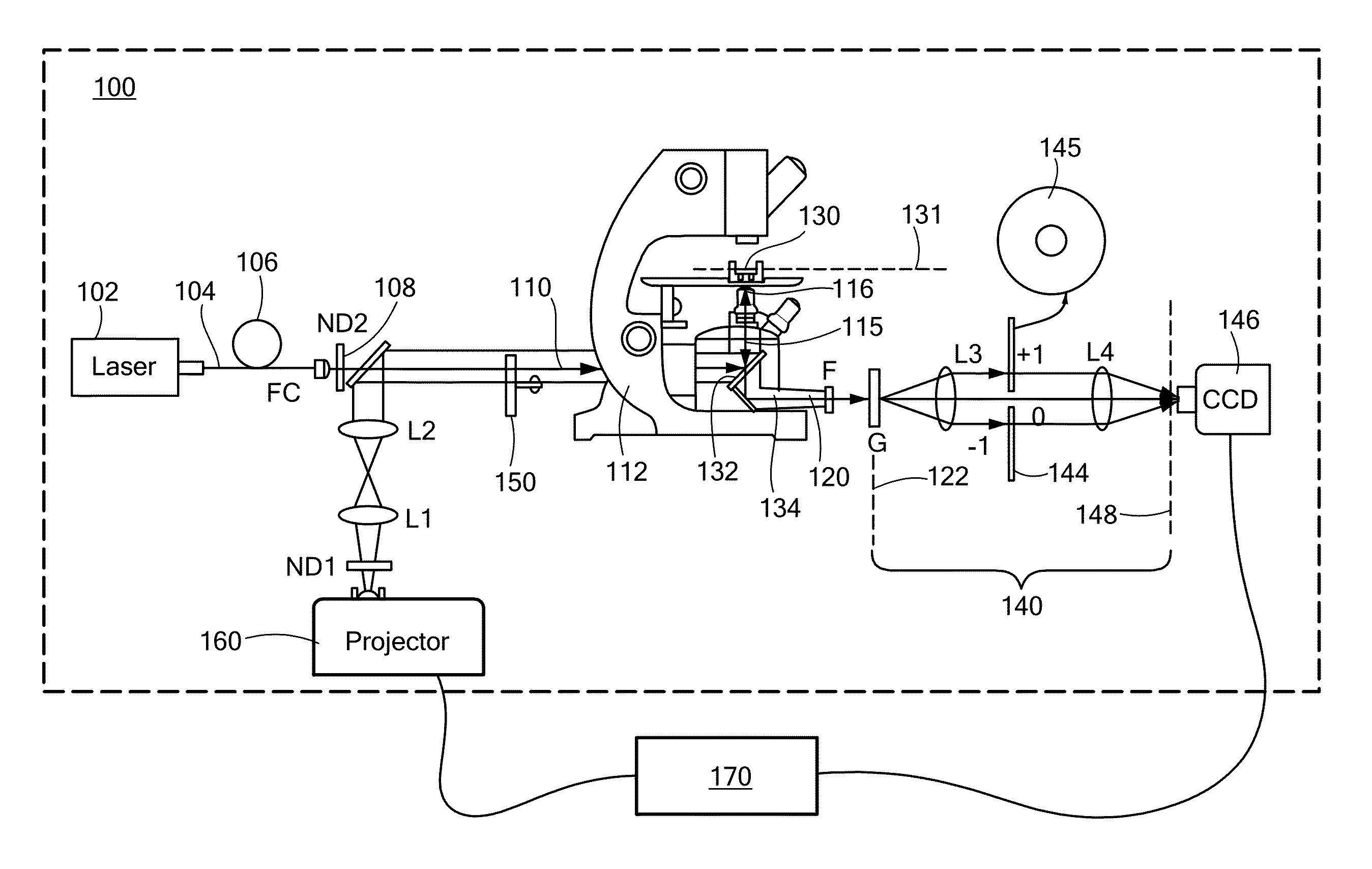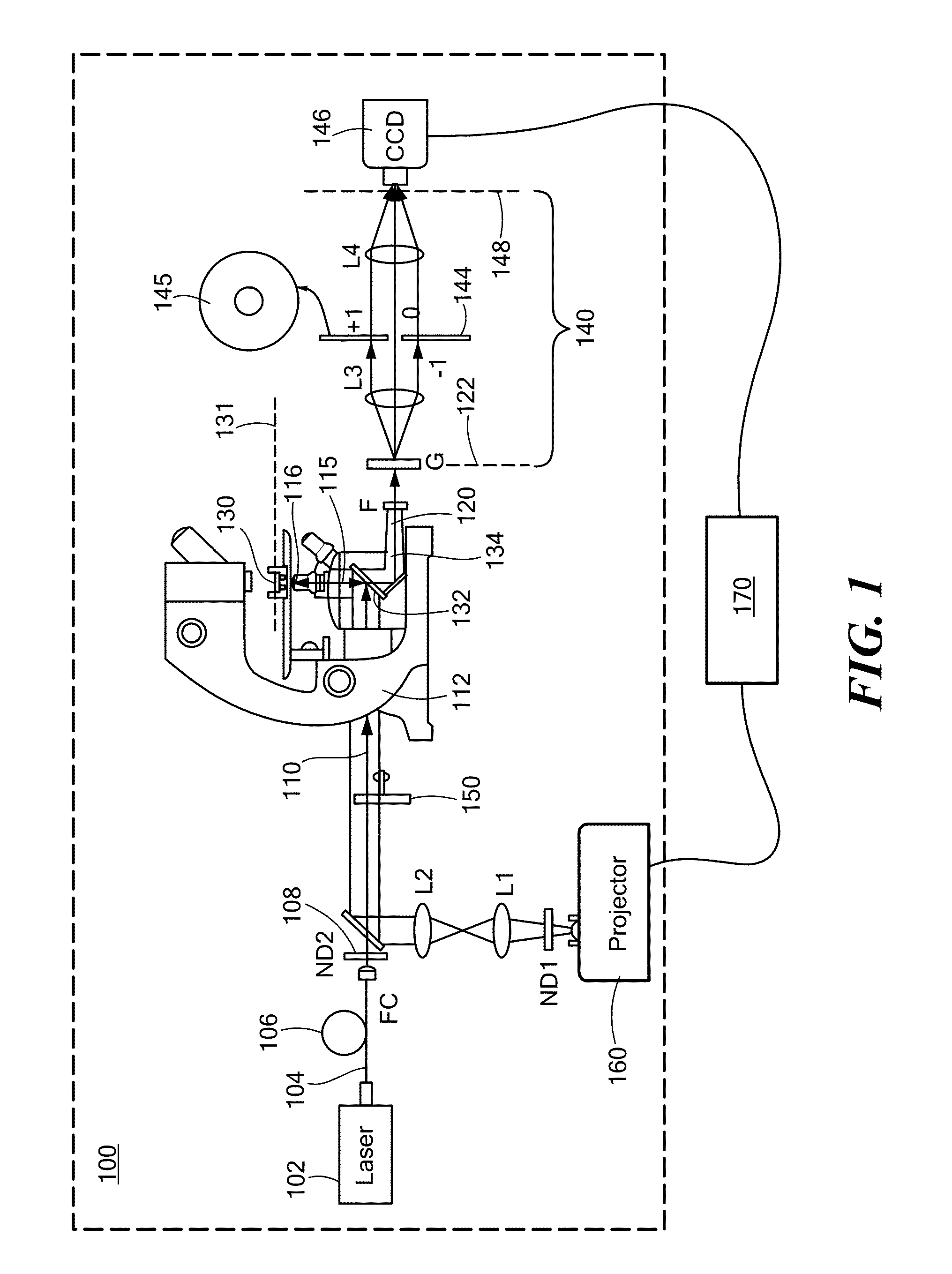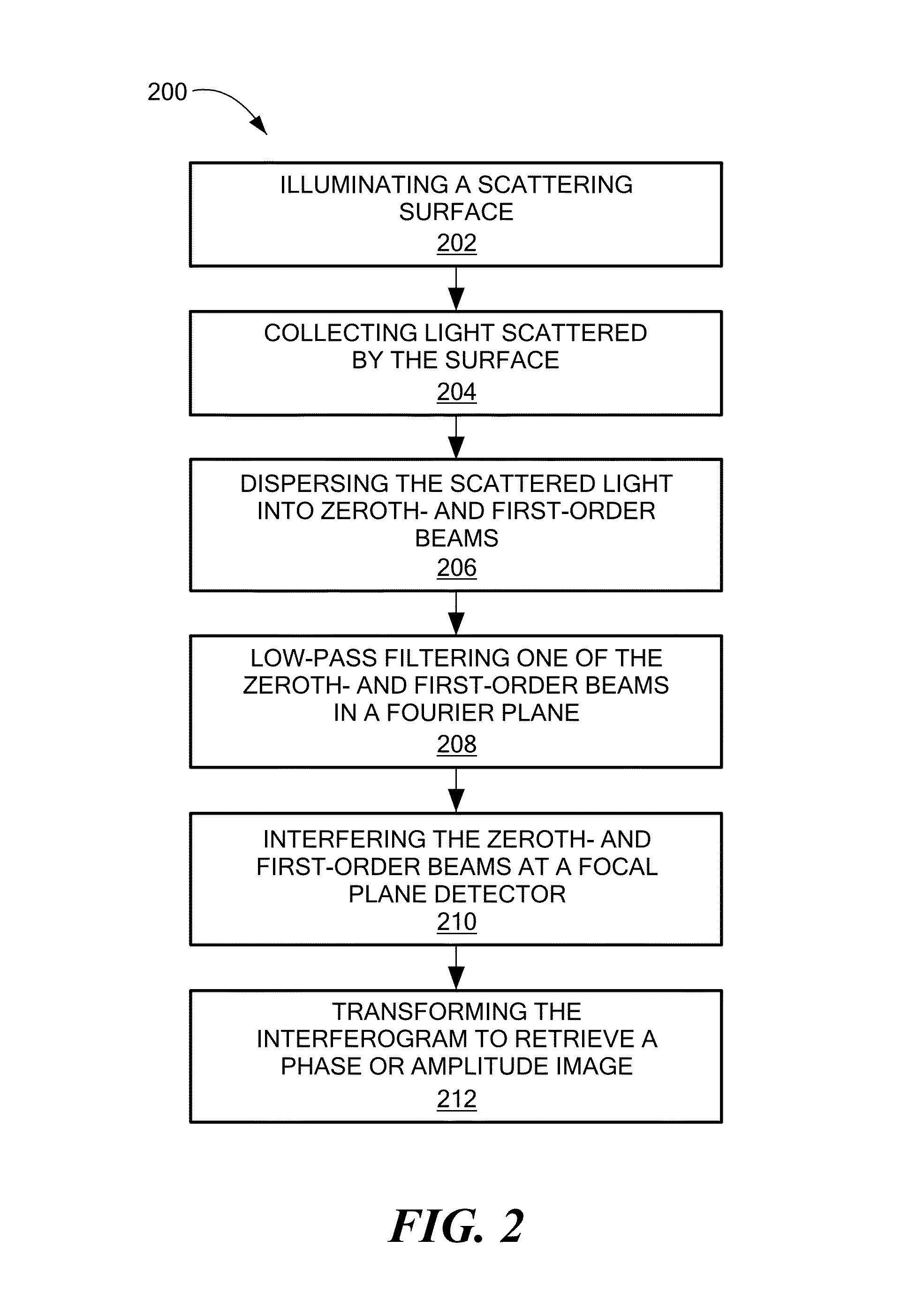Optically monitoring and controlling nanoscale topography
a technology of nanoscale topography and optoelectronic monitoring, applied in the direction of measurement devices, semiconductor/solid-state device testing/measurement, instruments, etc., can solve the problems of duplicate run time and cost, variation, lack of adaptive process control, measurement often requires sample destruction,
- Summary
- Abstract
- Description
- Claims
- Application Information
AI Technical Summary
Problems solved by technology
Method used
Image
Examples
example i
Unprocessed Wafer
[0045]In accordance with embodiments of the present invention, epi-DPM may provide accurate topographic height maps relative to other points in the image and therefore may be advantageously made insensitive to any common mode motion of the sample. To characterize the spatial and temporal path length noise of the epi-DPM method described herein, a plain, unprocessed n+ GaAs wafer (heavily n-doped) was imaged repeatedly in succession. The successive imaging yielded a time-lapse series of images containing 256 frames at 8.93 frames / s. A 10× objective (NA=0.25) provided a lateral resolution of 1 μm, with a field of view of approximately 160 μm×120 μm. After recovering the height images, a quadratic fit of each individual image was subtracted off. The linear portion of the fit corrects for the tilt of the sample and the angle of interference in camera plane 148 while the quadratic portion corrects for the quadratic phase front of the beam across the field of view. After ...
example ii
Etched Micropillars
[0047]In order to characterize the accuracy of epi-DPM, images of micro-pillars fabricated by wet etching of an n+ GaAs wafer were collected. Photolithography and developing were done using a standard SPR 511A photoresist recipe. A small degree of non-uniformity among multiple micro-pillar heights was observed, which is typical of the fabrication process. For epi-DPM, the spatial standard deviation in height was 6.3 nm for the unetched circular pillar and 4.8 nm for the etched region. The calibration procedure used previously (in Example I) on the flat sample helps but is not as effective on non-planar surfaces.
[0048]FIG. 3A shows the epi-DPM image of a micro-pillar with the diffuser. The positions of the pillar and etched region were extracted from the histogram of the epi-DPM image, as shown in FIG. 3B, by fitting each histogram peak to a separate Gaussian distribution. Although the spatial noise from an individual pixel is several nanometers, the standard error...
example iii
Dynamic Topographic Changes During Etching
[0050]The sensitivity and accuracy results described above underscore the capability of epi-DPM to monitor dynamic topographic changes at the nanoscale. Exploiting this feature, the topography of an n+ GaAs wafer was monitored while being etched with a solution of H3PO4:H2O2:H2O. A total of 400 frames were acquired at 8.93 frames / s, for a total of 44.8 seconds. The resulting epi-DPM movie revealed that it took approximately 10 seconds for the etchant to diffuse into the field of view and begin etching. The montage in FIG. 4A indicates the spatial inhomogeneity and the time evolution of the etching process. The quantitative information provided by epi-DPM allows a measurement of etch rates in a spatially and temporally resolved manner. FIG. 4B plots etch depth profile at discrete points across the sample.
Photochemical Etching
[0051]In combination with epi-DPM, and in accordance with alternate embodiments of the present invention, photochemical...
PUM
 Login to View More
Login to View More Abstract
Description
Claims
Application Information
 Login to View More
Login to View More - R&D
- Intellectual Property
- Life Sciences
- Materials
- Tech Scout
- Unparalleled Data Quality
- Higher Quality Content
- 60% Fewer Hallucinations
Browse by: Latest US Patents, China's latest patents, Technical Efficacy Thesaurus, Application Domain, Technology Topic, Popular Technical Reports.
© 2025 PatSnap. All rights reserved.Legal|Privacy policy|Modern Slavery Act Transparency Statement|Sitemap|About US| Contact US: help@patsnap.com



